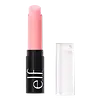What's inside
What's inside
 Key Ingredients
Key Ingredients

 Benefits
Benefits

 Concerns
Concerns

 Ingredients Side-by-side
Ingredients Side-by-side

Hydrogenated Polyisobutene
EmollientSucrose
HumectantSynthetic Wax
AbrasiveParfum
MaskingMicrocrystalline Wax
Emulsion StabilisingTocopheryl Acetate
AntioxidantDiethylhexyl Syringylidenemalonate
Skin ProtectingPhenoxyethanol
PreservativeCaprylyl Glycol
EmollientCaprylic/Capric Triglyceride
MaskingVitis Vinifera Seed Oil
EmollientSimmondsia Chinensis Seed Oil
EmollientPersea Gratissima Oil
Skin ConditioningButyrospermum Parkii Butter
Skin ConditioningBenzyl Benzoate
AntimicrobialCI 77891
Cosmetic ColorantCI 15850
Cosmetic ColorantHydrogenated Polyisobutene, Sucrose, Synthetic Wax, Parfum, Microcrystalline Wax, Tocopheryl Acetate, Diethylhexyl Syringylidenemalonate, Phenoxyethanol, Caprylyl Glycol, Caprylic/Capric Triglyceride, Vitis Vinifera Seed Oil, Simmondsia Chinensis Seed Oil, Persea Gratissima Oil, Butyrospermum Parkii Butter, Benzyl Benzoate, CI 77891, CI 15850
Sucrose
HumectantRicinus Communis Seed Oil
MaskingPetrolatum
EmollientHydrogenated Soybean Oil
EmollientBeeswax
Emulsion StabilisingHydrogenated Olive Oil
Skin ConditioningAroma
Simmondsia Chinensis Seed Oil
EmollientTheobroma Cacao Seed Butter
EmollientSilica
AbrasiveHydrogenated Jojoba Oil
AbrasiveHelianthus Annuus Seed Oil
EmollientOctyldodecyl Neopentanoate
EmollientEuphorbia Cerifera Wax
Ethylhexyl Methoxycinnamate
UV AbsorberCaprylyl Glycol
Emollient1,2-Hexanediol
Skin ConditioningButyl Methoxydibenzoylmethane
UV AbsorberTocopheryl Acetate
AntioxidantEthylhexyl Salicylate
UV AbsorberLimonene
PerfumingCI 77891
Cosmetic ColorantLinalool
PerfumingCI 15850
Cosmetic ColorantBenzyl Salicylate
PerfumingPhytosterols
Skin ConditioningCI 19140
Cosmetic ColorantSucrose, Ricinus Communis Seed Oil, Petrolatum, Hydrogenated Soybean Oil, Beeswax, Hydrogenated Olive Oil, Aroma, Simmondsia Chinensis Seed Oil, Theobroma Cacao Seed Butter, Silica, Hydrogenated Jojoba Oil, Helianthus Annuus Seed Oil, Octyldodecyl Neopentanoate, Euphorbia Cerifera Wax, Ethylhexyl Methoxycinnamate, Caprylyl Glycol, 1,2-Hexanediol, Butyl Methoxydibenzoylmethane, Tocopheryl Acetate, Ethylhexyl Salicylate, Limonene, CI 77891, Linalool, CI 15850, Benzyl Salicylate, Phytosterols, CI 19140
Ingredients Explained
These ingredients are found in both products.
Ingredients higher up in an ingredient list are typically present in a larger amount.
Caprylyl Glycol is a humectant and emollient, meaning it attracts and preserves moisture.
It is a common ingredient in many products, especially those designed to hydrate skin. The primary benefits are retaining moisture, skin softening, and promoting a healthy skin barrier.
Though Caprylyl Glycol is an alcohol derived from fatty acids, it is not the kind that can dry out skin.
This ingredient is also used as a preservative to extend the life of products. It has slight antimicrobial properties.
Learn more about Caprylyl GlycolCi 15850 is the pigment color red. It is an azo dye and created synthetically.
Azo dyes need to be thoroughly purified before use. This allows them to be more stable and longer-lasting.
This ingredient is common in foundations, lipsticks, and blushes. This color is described as brown/orangey red.
It has many secondary names such as Red 6 and Red 7. According to a manufacturer, Red 6 usually contains aluminum.
Learn more about CI 15850Ci 77891 is a white pigment from Titanium dioxide. It is naturally found in minerals such as rutile and ilmenite.
It's main function is to add a white color to cosmetics. It can also be mixed with other colors to create different shades.
Ci 77891 is commonly found in sunscreens due to its ability to block UV rays.
Learn more about CI 77891This oil comes from the seeds of the desert shrub called Jojoba. It is more commonly known as jojoba oil, a non-comedogenic oil.
Jojoba oil does not contain fragrance and has many fatty-acids, making it a great soothing ingredient.
It also contains Vitamin E, a great moisturizing ingredient. Vitamin E is also an antioxidant and protects your skin against oxidative damage.
This ingredient humectant properties, meaning it helps draw moisture from the air. This helps keep your skin hydrated.
While jojoba has antibacterial properties, it is only able to kill some strains of bacteria.
Studies also show it helps in wound healing. In fact, Indigenous cultures have used jojoba as a moisturizer and to help treat burns for centuries.
Fun fact: Jojoba oil similar to natural human skin sebum, so it has a great effect on dry skin. It is also promising with helping to regulate sebum production.
Due to its fatty acid content, Jojoba oil may not be fungal acne safe. We recommend speaking with a professional if you have any concerns.
Learn more about Simmondsia Chinensis Seed OilSucrose is a natural sugar found in fruits, vegetables, and nuts. It is the main constituent of white sugar.
In skincare, sucrose is a humectant and can be a mild exfoliant.
Sucrose is hydrophilic, meaning it attracts water. This makes it an effective humectant and helps hydrate the skin.
Studies show sugars may worsen acne-prone skin due to it disrupting the skin's natural biome. We recommend speaking with a professional if you have any concerns.
In some products such as body scrubs, sucrose is used as an gentle exfoliant.
The term 'sucrose' comes from the french word for sugar, 'sucre'.
Learn more about SucroseTocopheryl Acetate is AKA Vitamin E. It is an antioxidant and protects your skin from free radicals. Free radicals damage the skin by breaking down collagen.
One study found using Tocopheryl Acetate with Vitamin C decreased the number of sunburned cells.
Tocopheryl Acetate is commonly found in both skincare and dietary supplements.
Learn more about Tocopheryl Acetate